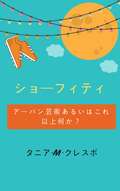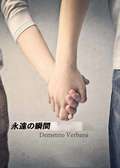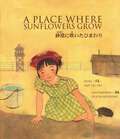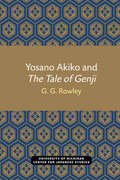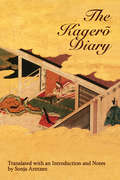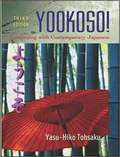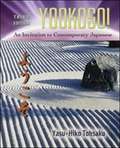- Table View
- List View
ショーフィティ: アーバン芸術あるいはこれ以上何か?
by タニア・M・クレスポ人生のすべてを持っていたダイアナは,メンタルヘルスクリニックで目を覚まし,入院の理由をすぐに思い出します.彼女は友人や家族を思い出し,サミュエルについて,そして彼女の人生がたった1か月でどのように変わったかについて考えます.これまでに自分の訴訟を引き受けた精神科医はより良い仕事を見つけたで 、 新 し い 精神科 い る と 言 っ た た。 彼女 は ま だ 彼 彼 知 知 り ま せ ん ん で し た が 、 彼 彼 を す す る こ と に に す べ べ て の 希望 希望 を 置 い い て い ま し た。 私 は そ こ か ら 抜 抜 出 前 前 前 と け け け き な な な り ま せ ん ん で 満 月 前 前 前 け け け け れ ば ば な な り ま ま せ ん ん し た た。
永遠の瞬間: Isländernes Lovbog I Fristatens Tid. Text I, Volume 1...
by デメトリオ・ヴェルバロ永遠の瞬間は愛と友情の激しい物語です。 主人公はジュゼッペやジェシカやシドニーと言う三人の少年少女です。皆はある意味では、普通ではないが特別です、しかし正確にこの多様性は同級生によって放り出されます。しかし、彼らは友情でユニークで不溶の絆を見つけるでしょう。 小説は二つの時間的で地理的レベルで構成されています。奇妙な章では物語は1992年の幼少期から二十歳まで三人の主人公たちの事件を語って、設定は丘の上にあるレッジョディカラブリアの小さな町だモソロファです。 偶数の章で2013年で、愛の合併症に直面することを意図したもう三十年の主人公たちを見つけます。設定はニューヨークです。ハッピーエンドで物語を愛する人に、私は最後の章に立ち寄ることを勧めます。
A Place Where Sunflowers Grow
by Amy Lee-TaiBilingual English/Japanese. A young girl finds things to be joyful about in the Topaz Internment Camp.Mari wonders if anything can bloom at Topaz, where her family is interned along with thousands of other Japanese Americans during World War II. The summer sun is blazingly hot, and Mari's art class has begun. But it's hard to think of anything to draw in a place where nothing beautiful grows. Somehow, glimmers of hope begin to surface under the harsh sun--in the eyes of a kindly art teacher, in the tender words of Mari's parents, and in the smile of a new friend. Inspired by her family's experiences, author Amy Lee-Tai has crafted a story rooted in one of America's most shameful historical episodes--the internment of 120,000 Japanese Americans during World War II. The art schools which offered internees moments of solace and self-expression are a little known part of this history. Amy Lee-Tai's gentle prose and Felicia Hoshino's stunning mixed media images are a testimony to hope and how it can survive alongside even the harshest injustice.
Yosano Akiko and The Tale of Genji (Michigan Monograph Series in Japanese Studies #28)
by Gaye Rowley G. G. RowleyYosano Akiko (1878–1942) has long been recognized as one of the most important literary figures of prewar Japan. Her renown derives principally from the passion of her early poetry and from her contributions to 20th-century debates about women. This emphasis obscures a major part of her career, which was devoted to work on the Japanese classics and, in particular, the great Heian period text The Tale of Genji. Akiko herself felt that Genji was the bedrock upon which her entire literary career was built, and her bibliography shows a steadily increasing amount of time devoted to projects related to the tale. This study traces for the first time the full range of Akiko’s involvement with The Tale of Genji. The Tale of Genji provided Akiko with her conception of herself as a writer and inspired many of her most significant literary projects. She, in turn, refurbished the tale as a modern novel, pioneered some of the most promising avenues of modern academic research on Genji, and, to a great extent, gave the text the prominence it now enjoys as a translated classic. Through Akiko’s work Genji became, in fact as well as in name, an exemplum of that most modern of literary genres, the novel. In delineating this important aspect of Akiko’s life and her bibliography, this study aims to show that facile descriptions of Akiko as a “poetess of passion” or “new woman” will no longer suffice.
The Kagero Diary: A Woman’s Autobiographical Text from Tenth-Century Japan (Michigan Monograph Series in Japanese Studies #19)
by Sonja ArntzenJapan is the only country in the world where women writers laid the foundations of classical literature. The Kagero Diary commands our attention as the first extant work of that rich and brilliant tradition. The author, known to posterity as Michitsuna’s Mother, a member of the middle-ranking aristocracy of the Heian period (794–1185), wrote an account of 20 years of her life (from 954–74), and this autobiographical text now gives readers access to a woman’s experience of a thousand years ago. The diary centers on the author’s relationship with her husband, Fujiwara Kaneie, her kinsman from a more powerful and prestigious branch of the family than her own. Their marriage ended in divorce, and one of the author’s intentions seems to have been to write an anti-romance, one that could be subtitled, “I married the prince but we did not live happily ever after.” Yet, particularly in the first part of the diary, Michitsuna’s Mother is drawn to record those events and moments when the marriage did live up to a romantic ideal fostered by the Japanese tradition of love poetry. At the same time, she also seems to seek the freedom to live and write outside the romance myth and without a husband. Since the author was by inclination and talent a poet and lived in a time when poetry was a part of everyday social intercourse, her account of her life is shaped by a lyrical consciousness. The poems she records are crystalline moments of awareness that vividly recall the past. This new translation of the Kagero Diary conveys the long, fluid sentences, the complex polyphony of voices, and the floating temporality of the original. It also pays careful attention to the poems of the text, rendering as much as possible their complex imagery and open-ended quality. The translation is accompanied by running notes on facing pages and an introduction that places the work within the context of contemporary discussions regarding feminist literature and the genre of autobiography and provides detailed historical information and a description of the stylistic qualities of the text.
